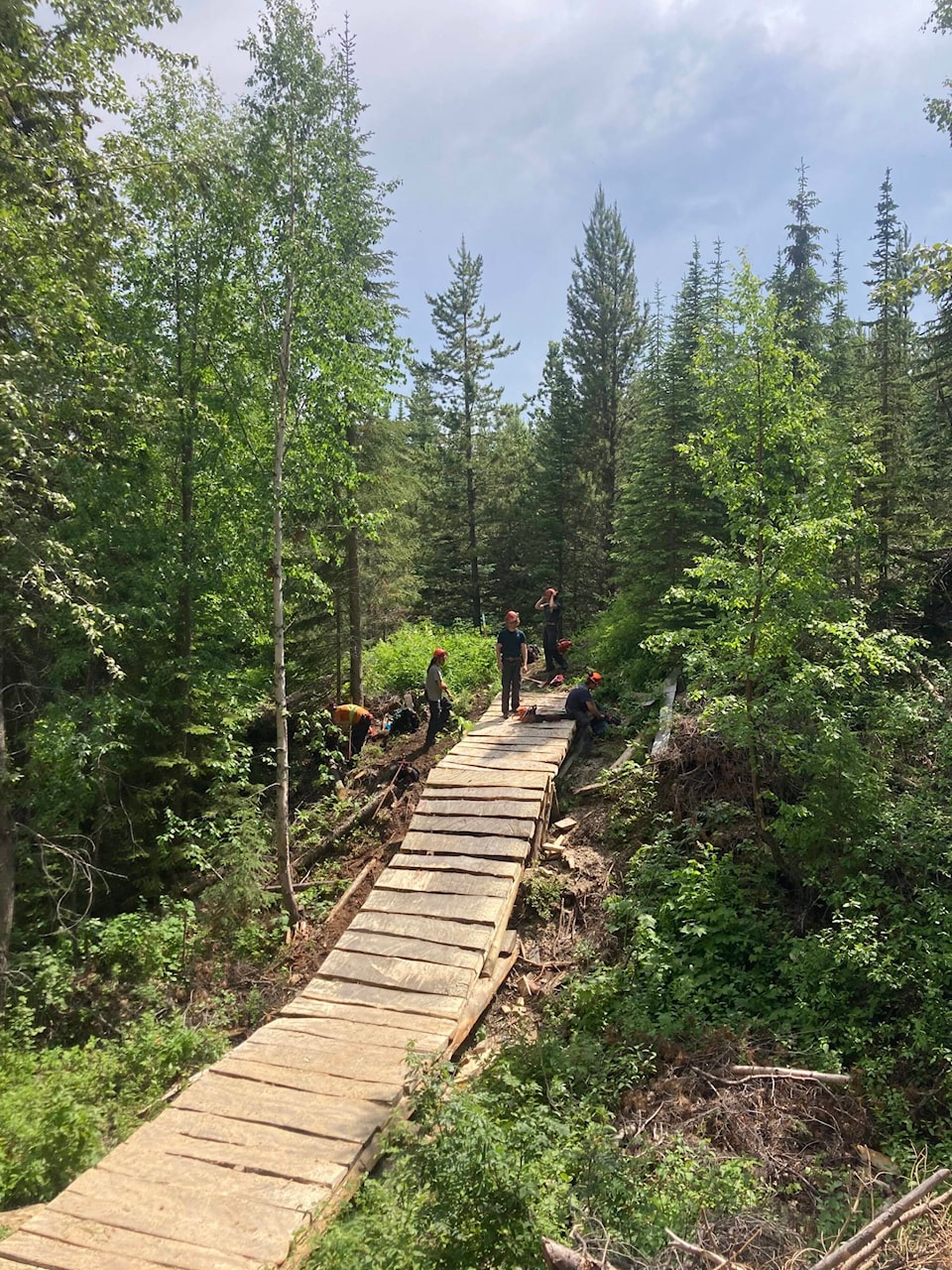Houston’s two BC Wildfire Service initial attack crews were out of town last week in other regions of the province responding to fires in those areas.
Being sent elsewhere has happened before this fire season as weather conditions and fires elsewhere determine how the wildfire service best uses the resources on hand.
On Aug. 9 one Houston team, NW Delta, was sent to a wildfire north of Terrace adjacent to Hwy113 near Rosswood as part of a robust response involving helicopters and fixed wing aircraft.
And the other Houston team, NW Echo, was in the Kamloops Fire Centre on a 14-day deployment that began July 30.
“Both Houston initial attack crews have been on and off standby throughout the season, ready to respond to any potential wildfires in the Houston area and have responded to a couple local incidents and nuisance fires,” reported wildfire service information officer Casda Thomas from the Northwest Fire Centre in Smithers.
“At the beginning of July, there was a high amount of fire activity in the Cassiar Fire Zone, while the conditions were cool and wet in the Houston area, and both initial attack crews were sent up to the Cassiar Fire Zone to respond to incidents in that zone,” she said of activity in the far northwestern section of the province.
The Northwest Fire Centre maintains crews on standby as needed throughout the fire centre, and there are also crews available nearby in Burns Lake and Telkwa.
Leading up to the generally drier and hotter days of summer, crews prepare for active service by training in falling and bucking, water delivery systems, aviation, first aid and structure protection.
“The initial attack crew supervisor also took part in advanced training for helicopter extraction of injured workers from areas of challenging terrain,” Thomas added.
When not called out to local fires or drawn to other regions for longer deployments, the local crews are available for community projects to improve outdoor recreational amenities.
Locally, that’s had crew members removing dead trees and completing fuel mitigation and pile burning around the bike trails on Mt. Harry Davis, working on building a new trail as well as wood structures on the trail called ‘Drop City’.
“Trail work was also completed at Barrett Hat on the “Lost Dog” trail and at a local rec site, which involved danger tree removal and clean up,” said Thomas.
“Often, project work also offers an opportunity for crews and other personnel to practice fireline skills such as tree falling. This year, BC Wildfire personnel in Houston assisted with falling trees for the future expansion of the landfill and cutting a path for fence building around the site,” she continued.
The crews were also involved in developing a forward attack base in the Takysie Lake area south of Burns Lake to increase response efficiency in that area.
